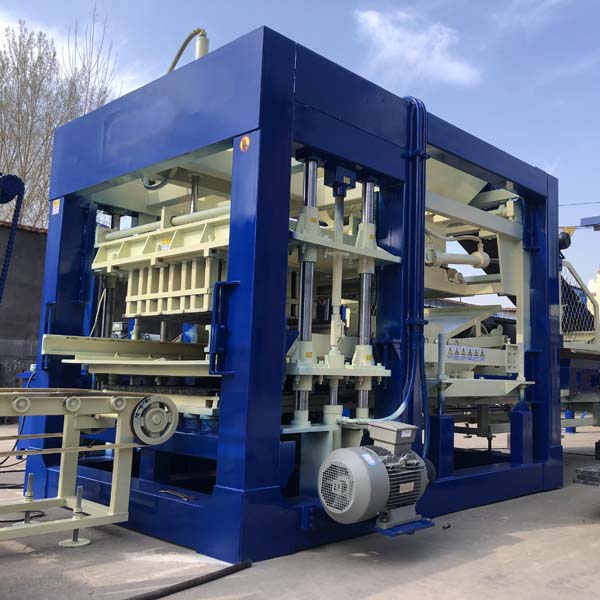
In the realm of construction, technological advancements have played a pivotal role in reshaping the way buildings are erected.
One such groundbreaking innovation that has garnered significant attention is cutting-edge brick making machinery.
These machines have transformed the traditional brick manufacturing process, enhancing efficiency, sustainability, and overall construction practices.
This essay delves into the revolutionary impact of advanced brick making machinery on the construction industry, exploring its key features, benefits, environmental implications, and potential future developments.
The Evolution of Brick Making Machinery
The history of brick making dates back thousands of years, with manual labor being the primary method for producing bricks.
However, as the demand for construction materials escalated, so did the need for more efficient and scalable production methods.
This paved the way for the evolution of brick making machinery.
From the rudimentary hand-operated presses of the 18th century to the mechanized processes of the Industrial Revolution, brick making has come a long way.
Today, advanced technology, automation, and engineering have converged to give rise to a new era of brick making machinery that is transforming the construction landscape.
Key Features and Innovations
Modern brick making machinery is characterized by a multitude of innovative features that have redefined the way bricks are manufactured.
One of the most notable innovations is automation.
Automated brick making machines can execute various stages of production, including raw material preparation, molding, drying, and even packaging, with minimal human intervention.
This significantly boosts production efficiency, reduces labor costs, and enhances the consistency and quality of the final product.
Moreover, cutting-edge brick making machinery employs precision molding techniques, ensuring that each brick is uniform in size and shape.
This level of precision enhances the structural integrity of buildings while facilitating tighter and more accurate construction tolerances.
Additionally, the integration of digital controls and monitoring systems allows operators to fine-tune parameters, track production in real-time, and identify potential issues before they escalate.
Benefits for the Construction Industry
The adoption of advanced brick making machinery offers a plethora of benefits for the construction industry.
Firstly, increased production efficiency translates to faster project completion times.
The reduced reliance on manual labor not only accelerates the manufacturing process but also minimizes the impact of labor shortages, a common challenge in the construction sector.
Secondly, the enhanced quality and uniformity of bricks lead to more structurally sound buildings.
Uniform bricks fit together seamlessly, reducing the need for excessive mortar and minimizing the risk of structural weaknesses.
This has a cascading effect on the durability and longevity of constructed buildings, ultimately providing better value to clients and occupants.
Furthermore, the automation of brick making machinery contributes to improved worker safety.
Labor-intensive brick making processes often involve exposure to hazardous conditions.
By automating these tasks, the risk of accidents and work-related injuries is significantly reduced.
Environmental Implications and Sustainability
The construction industry’s environmental impact is a growing concern in an era of heightened ecological awareness.
Advanced brick making machinery has made substantial strides in addressing these concerns.
Sustainable brick manufacturing technologies prioritize resource efficiency and waste reduction.
Many modern machines utilize recycled materials, such as crushed construction debris and fly ash, to create bricks.
This not only reduces the demand for virgin raw materials but also diverts waste from landfills.
Moreover, energy-efficient kiln designs and precise control systems contribute to lower energy consumption during the drying and firing stages of brick production.
This helps mitigate greenhouse gas emissions and reduces the overall carbon footprint of the construction process.
The integration of eco-friendly manufacturing practices aligns with the global push towards sustainable construction and demonstrates the industry’s commitment to responsible environmental stewardship.
Future Directions and Conclusion
As technology continues to advance, the trajectory of brick making machinery is poised for further innovation.
The convergence of artificial intelligence, data analytics, and robotics holds the potential to revolutionize the industry even more.
Predictive maintenance algorithms could identify machinery issues before they lead to downtime, while AI-driven quality control systems might ensure each brick meets rigorous standards.
In conclusion, cutting-edge brick making machinery is reshaping the construction landscape by improving efficiency, quality, and sustainability.
From the evolution of manual labor to the current era of automated precision, brick making has demonstrated its adaptability and responsiveness to the changing demands of the industry.
As construction practices continue to evolve, these machines will undoubtedly remain center stage, driving innovation and redefining the way we build our world.
